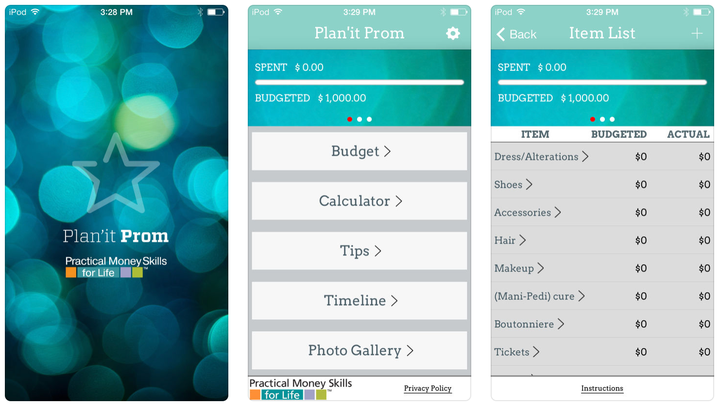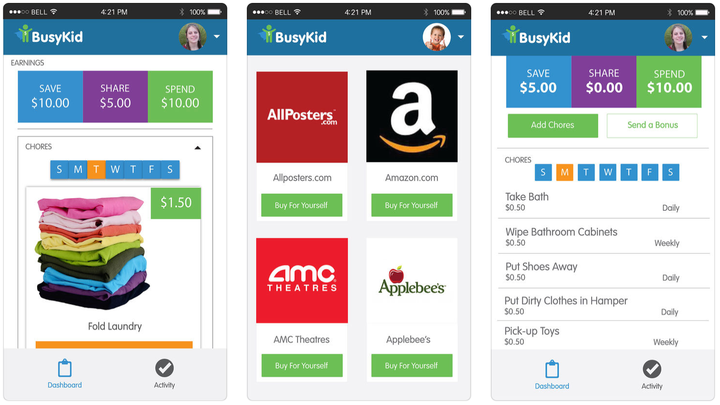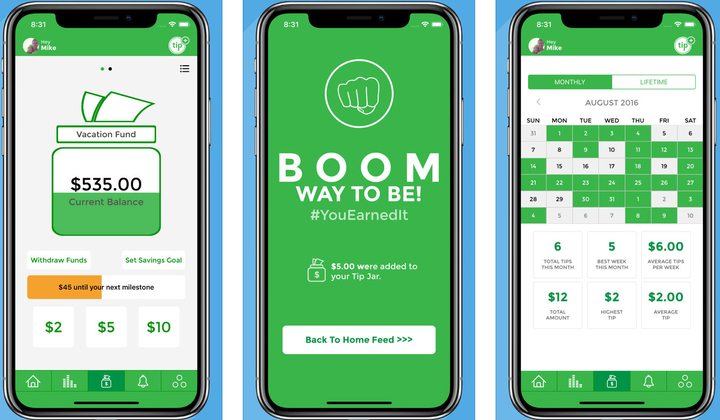You can lecture your teenagers about how they spend their cash only so much. Besides, they can lecture back: Maybe you buy expensive coffee or bottled water or pay for a gym membership you never use.
Instead, you may want to suggest that your children try out some money management apps. In other words, outsource some of your lecturing and oversight to technology.
Or keep hectoring your kids, if you prefer. But you could do both. Money management apps can be a useful tool for teaching teenagers better spending habits, and they can be an effective strategy for helping you and your children communicate better about your finances. Let’s take a look at some apps you may want your teens to download.
1. Greenlight

It’s a debit card with parental controls for children. You can monitor their account, and they can too. So if they’re about to go into a store and have a smartphone, they can check their balance, which they might want to do, since if they try to spend money that isn’t on the card, the transaction will be declined. Remember the first time you experienced that humiliation? Your teen could avoid that rite of passage altogether. That’s progress.
There are some cool features beyond the debit card part. You can set up an account so your teenagers save money and collect interest on it. (The interest will come from your bank account, sadly, and not from Greenlight.) You could arrange it so your kids get 10 percent interest every month (far better than any bank, of course) so they can see the power of savings and interest.
The pricing is $4.99 a month per family.
2. FamZoo

This is a personal finance app that says it’s ideal for preschoolers through college, and it’s good for parents.
You can use it to work as a high-tech allowance system: You set chores for your kids to do, and assuming they follow through and do them, you release money to their accounts. For the teenagers, you can get them prepaid cards. You can see the transactions your teen is making, and you can load money on the cards anytime. Of course, since there are fees for this ― after a free trial period, you pay $5.99 per month, less if you prepay ― you may wonder why you shouldn’t just use your own bank and get your kid an account that you can monitor. But you can’t get overdraft fees with FamZoo, which is a big selling point.
3. Plan’it Prom

Are your teens planning to attend prom? Yeah, there’s an app for this too. As the copy at the Apple Store assures you, this is the “definitive prom planning and budgeting app for students and parents, incorporating a prom countdown, timeline, budget calculator and budget health meter into a layout that is fun and easy to use.”
According to an often-cited 2015 report by Visa in 2015, going to a prom costs $919, on average. So on the one hand, this app is probably sorely needed. On the other, your bank account is probably going to feel afterward as if it had been mugged, no matter how many money management apps you use.
4. BusyKid

This app says that it’s a good fit for kids ages 5 to 16, though it’s hard to imagine too many teenagers being too excited about using an app with “kid” in the name. In any case, it may be worth looking into. The app is designed to teach your children how to earn, save, spend and invest. BusyKid’s features include being able to assign chores and other tasks to your children. They get an account; you have an account. Your kids get automatic paydays each Friday, provided you verify on the app that the chores have been done, and your kids can earn bonuses for extra chores they do.
If you want your teenagers to do more around the house and learn the value of work, it could be a good app to start using. There is a fee of $14.95 a year per family.
5. Tip Yourself

This is an app that parents might want to use too, since it’s really geared more toward adults, but like the Mint app below, teens may benefit as well. It’s a pretty cool concept: Why not reward yourself when you do something good? It’s a habit-building app that gets you into a pattern of saving money for yourself, as well as building other habits. So if your teenagers have babysitting jobs or work at a fast food joint or wherever, you could encourage them to put aside some of their money every time they get paid, just because it’s smart. Or if your teens are applying for college, they can send $10 to their tip jar every time they fill out an application. If you’re trying to get yourself to read more or get on the treadmill, maybe you give yourself $5 every time you do that.
You get the idea. The money goes from your checking account to a tip jar managed by the FDIC-insured NBKC Bank.
6. Mint

This is arguably the best-known personal finance app. It’s well respected, many people love it, and it’s free. It helps people manage their checking accounts, credit cards and investments and helps with tracking spending and setting budgets. It really is aimed at adults, though, so it may be a little too much for some teenagers, but if you have teens who have a bank account and a job and even pay some bills, it may be perfect. After all, if your teens spend too much and don’t stay within their budget, Mint will let them know. Better to have an app nagging them than you.
